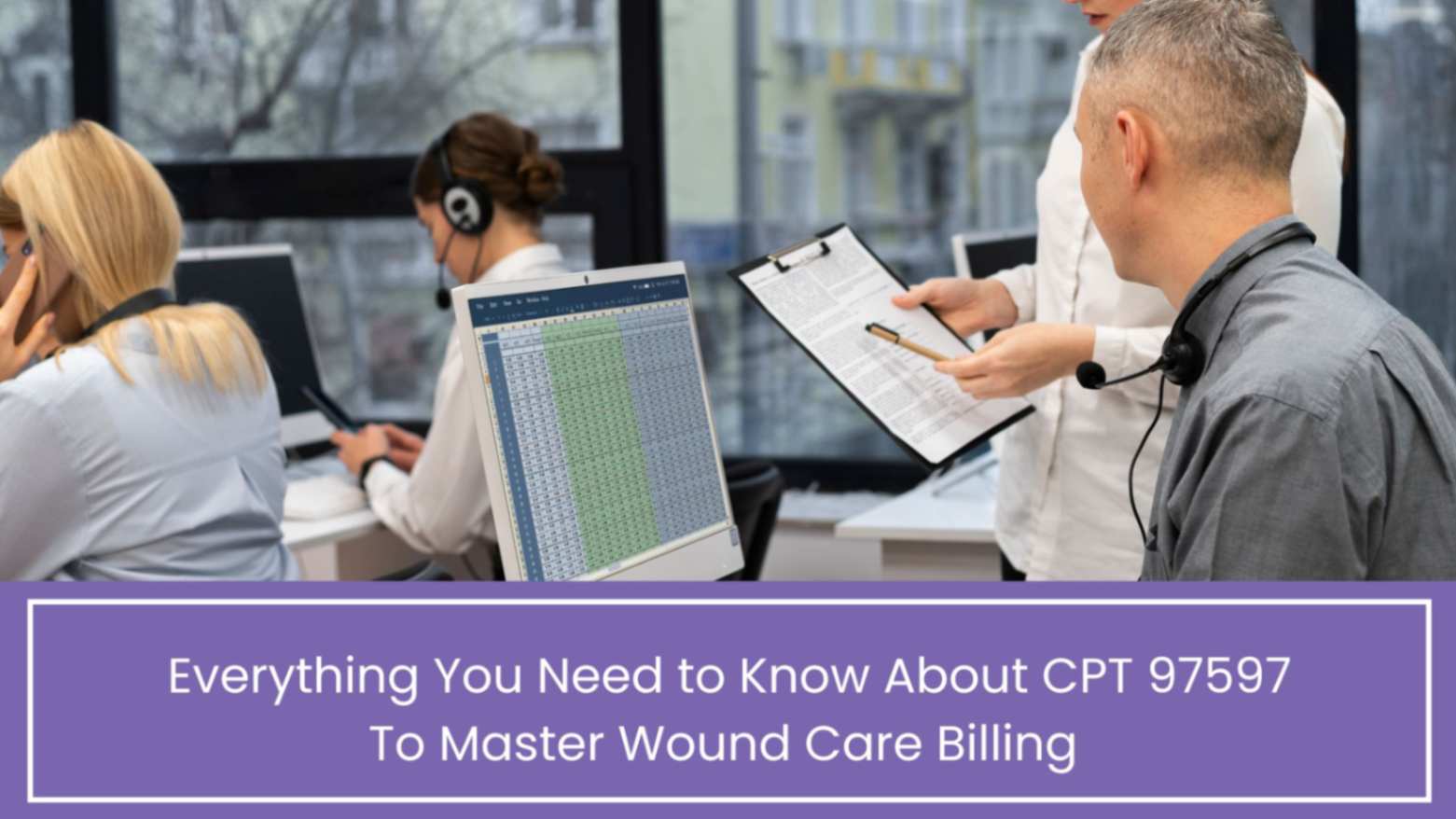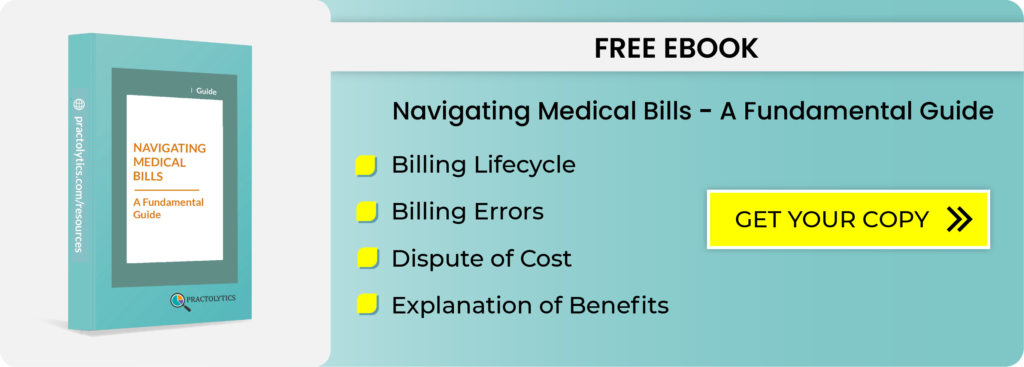A Comprehensive Guide to Understand CPT Code 97597
If there is something more frustrating than punishing a disobedient wound, it is denying a claim for its treatment. A comprehensive guide to understand CPT 97597—selective wound debridement—is the kind of code you will come across frequently if your practice manages chronic or complex wounds. Nevertheless, even experienced coders get foggy when it comes to when to use it, how to document it appropriately, and which errors lead to audit flags.
It’s -97597. “This review was completed to eliminate confusion, promote reimbursement, and reduce administrative obstacles from getting in the way of taking care of patients.”
Table of Contents
What Is CPT 97597?
The CPT 97597 describes the selective debridement of open wounds 20 cm in size or smaller, which shall include the following:
- Assessment of the patient/wound (size, depth, presence of necrotic tissue)
- Removal of necrotic tissue using sharp debridement with scalpel or scissors, enzymatic debridement, or mechanical debridement with wet-to-dry dressings or irrigation
- Application of dressings and topical agents, including whirlpool therapy if considered part of the debridement process
- Patient/caregiver instruction on home wound care billing.
Hence, 97597 contributes to the entire dressing process; you do not bill for every dressing or irrigation.
When to Use 97597
Not every wound cleansing qualifies for 97597. Let’s look at the must-haves:
1. Necrotic or nonviable tissue:
If you’re simply cleaning a fresh surgical incision or changing a routine dressing, that’s not debridement. There must be dead, sloughy, or fibrotic tissue needing removal.
2. Wound surface area ≤ 20 cms:
Measure length × width in centimeters. If the total area exceeds 20 cm², you must use 97598 (for wounds 20.1–100 cm²).
3. Provider-led, non-surgical setting:
True surgical debridement (in the OR) uses surgical codes like 11042–11047. CPT 97597 is for outpatient, clinic, or home-care settings.
4.Single-session service:
Each date of service covers a single debridement event. If the same patient needs two distinct sessions in one day for separate wounds, check payer policies—most limit it to one unit per date.
Pitfalls of Common Billing:
Even experienced billers can misfire on 97597. Watch out for these traps:
- Upcoding wound size:
Overestimating the area to bill 97598 instead of 97597? That’s a red flag for auditors. - Double-billing dressings or whirlpool separately:
Dressings, whirlpool, and patient education are all part of 97597. Don’t file a separate code like 97606 for dressings on the same day. - Ignoring debridement technique:
If you only remove nonviable tissue via irrigation or wet-to-dry dressings, document it clearly. Some payers require sharp debridement for 97597—others accept mechanical or enzymatic removal. Know your target payer’s preference. - Missing modifier requirements:
When debridement spans multiple wounds or encounters, you may need a –59 (Distinct Procedural Service) modifier. Check your payer’s modifier guidelines.
Best Practices of Documentation:
Your chart note is your strongest defense in case of a claim review. Here’s what to capture:
1. Wound description:
Location (e.g., “left lateral calf”), size (e.g., “3.2 × 2.5 cm”), depth, and appearance of necrosis or slough.
2. Debridement details:
Instruments used: “Sharp debridement with scalpel and curved iris scissors.”
Amount removed: “Removed approximately 4.5 cm² of devitalized tissue to healthy margins.”
3. Adjunct therapies:
Note whirlpool use, enzymatic agents applied, or irrigation volumes.
Do not list standard dressings separately.
4. Patient education:
“Discussed home wound care, signs of infection, and scheduled follow-up in 48 hours.”
5. Time spent (if needed):
Some payers accept time-based reporting. Log total face-to-face time (e.g., “35 minutes of debridement and patient education”).
With thorough documentation, you’ll have a clear audit trail and reduce the risk of denial or recoupment.
Tips to Streamline Your Workflow
1. Standardize measurement tools:
Use disposable rulers or digital planimetry to ensure consistency.
2. Create a debridement template:
Pre-built EHR templates prompt the clinician for all key details—size, technique, and patient teaching.
3. Train your team:
Hold quarterly refreshers on 97597 vs. 97602 (non-selective debridement) vs. surgical debridement codes.
4. Leverage point-of-care coding checks:
Real-time scrubbing software can flag missing modifiers or duplicate services before claims go out.
5. Audit regularly:
Pull a monthly report on all 97597 claims. Look for unusual patterns, such as repeated single-wound debridements on the same day.
What About 97598? When Wounds Exceed 20 cms
If you encounter a wound larger than 20 cm², switch to CPT 97598. Its documentation and clinical requirements mirror 97597, but because it covers more extensive work, it carries a higher reimbursement. Always confirm wound measurements before selecting 97598.
Staying Ahead of Payer Guidelines
Payer policies on debridement can vary:
- Commercial insurers may require prior authorization for multiple sessions.
- Medicare generally allows 97597 once per wound per 30 days, unless a new wound appears.
- Medicaid rules differ by state—check your local Medicaid manual.
Tip: Maintain a living spreadsheet of your top payers’ debridement rules so staff can reference it quickly.
Final Thoughts:
Selective debridement carried out under the particular CPT code 97597 is a sine qua non of billing for effective wound care—that’s if you:
Choose the right code (97597 vs. 97598 vs. surgical codes)
- Have detailed documentation for each and every step
- Make sure to not bill anywhere else for services included
- Make sure your team understands payer idiosyncrasies
Once mastered, these nuances help you fight through denials more quickly, over time shortening the cash flow time and reducing the time spent in claims management, hence providing more time and peace of mind for high-quality patient care delivery.
Let’s Get Started: Optimize Your Wound Care Coding!
Practolytics coders and billing specialists are all about wound care. Custom audits, staff training, and real-time coding support are provided to your team so it can focus on healing instead of hassles. Contact us today for a smooth workflow for CPT 97597 and revenue protection.
ALSO READ – Decoding CPT: Your Guide to Codes and Regulations 2024
Talk to Medical Billing Expert Today — Get a Free Demo Now!






